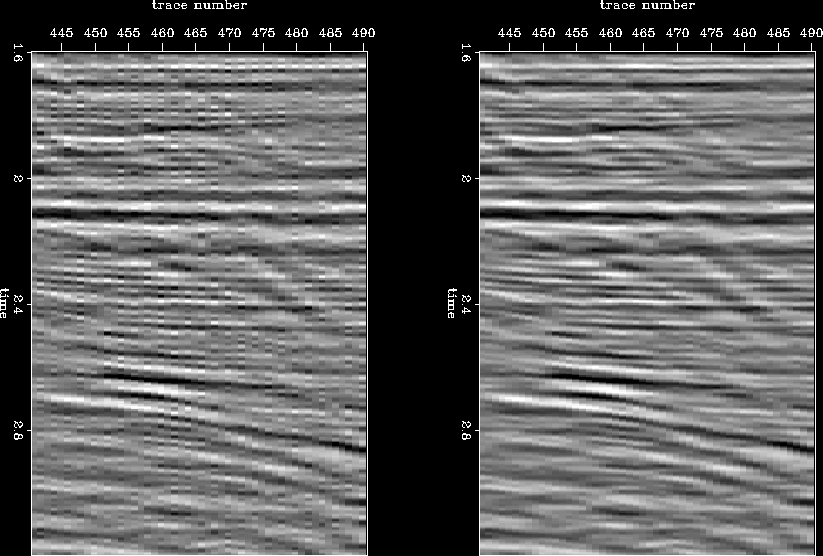




Next: Conclusions
Up: Madhav Vyas: Covariance based
Previous: 3D results from Gulf
Some of the results have shown that there is an amplitude discrepancy between the interpolated and the actual data values. Results of simple energy-balancing conditions were not satisfactory. Hence, I propose a modification in the interpolation scheme to obtain smoother results from real data sets without compromising the sharpness and resolution. In its original form, the method uses the filter to fill in the missing values in a single step. If we instead introduce an inversion goal similar to the one given in the following equations, we will get much smoother results at the cost of extra computation time.
|  |
(9) |
| (10) |
win3
Figure 24 Window from inline section comparing interpolated result with (right) and without (left) regularization.
Here, K is the mask for known values, A is the filter determined from the covariance structure, d is the known data, and m is the smooth interpolated model that we desire. Figure ![[*]](http://sepwww.stanford.edu/latex2html/cross_ref_motif.gif) draws a comparison between the interpolated and the regularized result. Notice that the blocky pattern present in the interpolated image is no longer present in the regularized result.
draws a comparison between the interpolated and the regularized result. Notice that the blocky pattern present in the interpolated image is no longer present in the regularized result.





Next: Conclusions
Up: Madhav Vyas: Covariance based
Previous: 3D results from Gulf
Stanford Exploration Project
1/16/2007

![[*]](http://sepwww.stanford.edu/latex2html/cross_ref_motif.gif) draws a comparison between the interpolated and the regularized result. Notice that the blocky pattern present in the interpolated image is no longer present in the regularized result.
draws a comparison between the interpolated and the regularized result. Notice that the blocky pattern present in the interpolated image is no longer present in the regularized result.